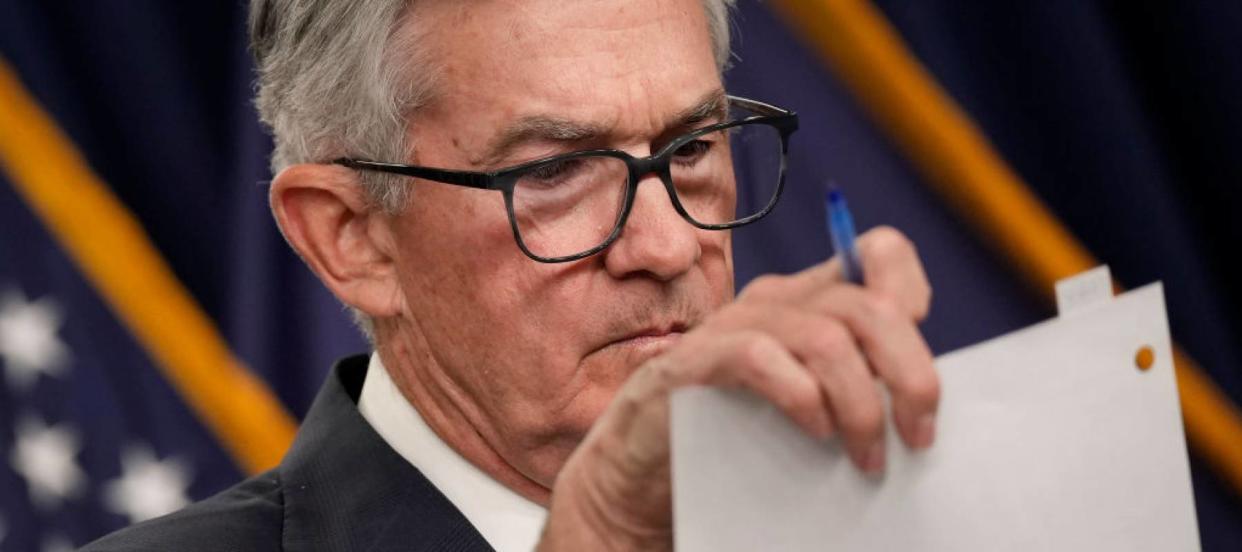The Fed's reverse repo use just hit a fresh record of $2.4 trillion — why that's one of the clearest 'bad signs' for the market

There’s been yet another record-high uptake in the amount of cash investors are stashing in a major Federal Reserve facility.
The Fed parks excess cash reserves from banks in the Overnight Reverse Repurchase Facility. A reverse repo, or RRP, helps the central bank conduct monetary policy by selling securities to counterparties to be bought back for a higher price later on — essentially working as a short-term loan.
The RRP facility was hit with $2.367 trillion on Sep. 28, higher than the previous record of $2.359 trillion set on Sep. 22.
Investors are sticking with ol’ reliable cash in order to ride out the current economic uncertainty — but it doesn’t seem as though the market will return to normal anytime soon.
Don’t miss
Invest your spare change and turn your pennies into a productive portfolio
Mitt Romney says a billionaire tax will trigger demand for these two physical assets
You could be the landlord of Walmart, Whole Foods and Kroger
Investors are tucking their cash away for safe-keeping
Rising interest rates have seen investors pull back on taking risks — the S&P 500 has plunged for three consecutive quarters — which means they’re now turning to avenues with lower risk and safer returns.
Enter cash and cash-like assets. Investments like money market funds, which are fixed income mutual funds that invest in short-term, low-risk debt securities, have been a safe space for investors during periods of high volatility.
The Treasury Department has been shrinking its cash balance from about $1.6 trillion at the beginning of 2022, to around $300 billion (returning to pre-pandemic levels). The drop in bill issuance means investors have needed a place to put their spare cash — and that place has been the RRP facility.
Since March, experts have been projecting that RRP usage would rise in order to help normalize cash supply levels.
Stay on top of the markets: Don’t miss the latest news and a steady flow of actionable ideas from Wall Street's top firms. Sign up now for the MoneyWise Investing newsletter for free.
Then, in July, in explaining the increase in RRP participation, the Fed pointed to larger investments from money market funds and ongoing reductions in Treasury bill issuances, which impacted the yields of other investment options available to those funds.
Why this is a bad sign for the market
The Fed is currently paying an overnight rate of 3.05% as of Sep. 22 — the highest yield since 2013. It increased from 2.30% after the central bank recently lifted interest rates by 0.75 percentage points.
An increase in the reverse repo rate restricts cash supply and helps to correct inflation.
However, whenever banks and other financial institutions have turned to the Fed’s major lending facilities in the past, this has been a clear indicator of economic instability. It was strains on the repo market in back 2007 that brought about the financial panic of that year that led into the 2008 financial crisis.
Uptake in the RRP facility could continue to increase depending on the supply of short-term investments and demand from money market funds, Fed officials noted in the July meeting.
Bank of America strategists recently reported that investor sentiment is the worst it's been since 2008. And the bank anticipates that cash and commodities will continue to outperform bonds and stocks.
For the week through Sep. 21, cash had inflows of $30.3 billion, according to EPFR Global data.
Experts forecast the market will remain volatile for the rest of the year, while fears of a recession next year continue to loom, further spooking investors.
What to read next
House Democrats have officially drafted a bill that bans politicians, judges, their spouses and children from trading stocks — but here's what they're still allowed to own and do
Billionaire Carl Icahn warns the 'worst is yet to come' — but when an audience member asked him for stock picks, he offered these 2 'cheap and viable' names
Do you fall in America's lower, middle, or upper class? How your income stacks up
This article provides information only and should not be construed as advice. It is provided without warranty of any kind.

 Yahoo Movies
Yahoo Movies 
